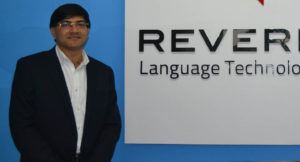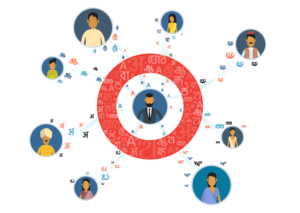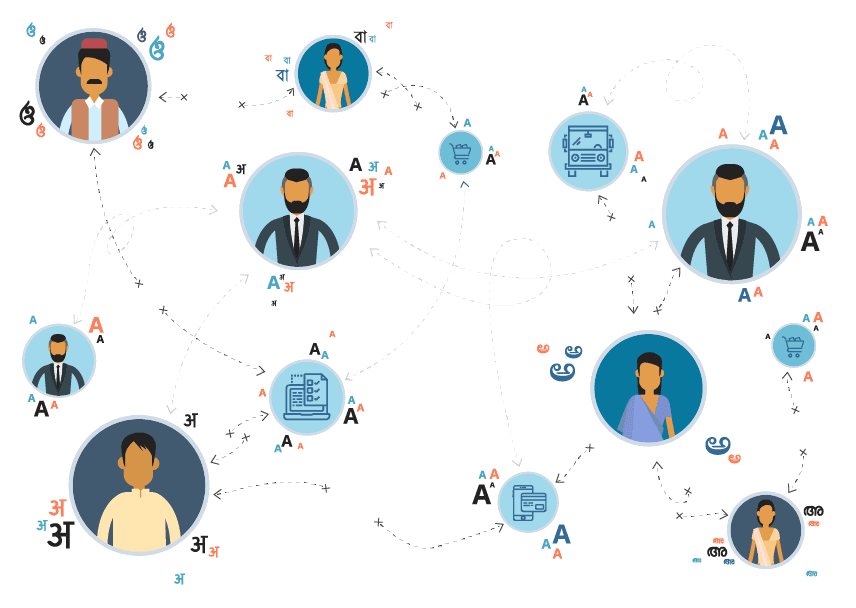Qualcomm Ventures and Aspada Investments-backed Reverie Language Technologies aims to bring language equality on the Internet, in India and select global markets.

“In 2009, when smartphones were just picking up, we found no options in it for Indian languages. We found it surprising because a majority of engagement in India, be it through newspapers or entertainment, happens in local languages,” recalls Arvind Pani. It was this revelation that led Pani, Vivek Pani (Arvind’s brother), and S.K Mohanty to found Reverie Technologies in 2009.
During the founding days, one of the things that worked in their favour was that two of the co-founders were employees at CDAC (Centre for Development of Advanced Computing), Pune where they were involved in Indian language computing. And, one of the co-founders, Vivek, also understood the challenges of private computing and realised that it could fit the mobile space, which was at a nascent stage at that point.
Understanding the business model
Reverie has a clear vision now; to promote language equality on the Internet and deliver great quality language experience. Its Language-as-a-Service cloud platform provides localisation services such as local-language translation, transliteration, device input, and search through a set of APIs. The platform integrates with business infrastructure (websites and apps) to enable end users to consume digital content in their preferred language, real-time.
The company collaborates with OEMs and chipset manufacturers, Central and State Governments, regulatory bodies, enterprises (consumer Internet) and the developer community to expand its reach.
A large part of the company’s initial journey was bootstrapped and it turned profitable from 2011. It won the Qualcomm’s Q prize in 2011 to the tune of US$ 100,000. In late 2015, the company raised US$ 4 million Series A from Qualcomm Venture and Aspada Investment Company and is likely to raise funds in 2018 to fuel further expansions.
Where is equality if the Internet and its experience is designed for English and not for Indian languages?
Equality on the Internet
Arvind believes that there are two types of consumers on the Internet: English speaking and non-English speaking. And, the reality is that the non-English speaking population is nine to 10 times bigger than the English speaking one. “Where is equality if the Internet and its experience is designed for English and not for Indian languages?” questions Arvind. That being said, he admits that they cannot solve the problem of the end users directly. Instead, the company works with other entities to reach out to end users and enable them to deliver the language experience. Entities here refer to companies in the consumer Internet space (online retail, e-commerce marketplaces, travel, media & entertainment), banks and financial services, and e-governance, across millions of devices.
Talking about user evolution, Arvind says that it is no different from how English language users have evolved. The only difference is in the channel of access. Most of the English language Internet users got introduced to the Internet through PC or a mix of PC and mobile. “Today, the new Internet user understands mobile better as they do not know the PC era,” says he. This entire user base is not very mature in terms of Internet usage and the Reverie team believes that it is going to take them about 18 to 24 months to get there. They will start consuming content like videos, pictures and music and evolve into mature users who can get involved in transactions and utility related usage.
Growing pains
“We set out on this journey by providing the main technology needed in mobile phones; to be able to read and write in local languages,” recalls Arvind. At the end of 2016, the company launched its Language-as-a-service platform for enterprises and almost all the media device brands continue to remain its customers. The company also works closely with the Government. “We are in a position to recommend any Policy and Regulatory changes to the Government and we are working with multiple bodies to make these recommendations,” states he.
With an employee base of over 65, Reverie reaches a large section of users. To name a few; through the eNAM portal, it has the potential to reach 45 lakh farmers; Ola’s driver app has been localised using its platform and more than 80 per cent of the drivers are using the company’s app; over 40 per cent of Practo users use Reverie’s platform to book appointments.
Currently, the company gets 50 per cent of its revenues from the platform and the remaining from licensing to mobile manufacturers. “We have always envisaged that platform revenue will be the main stay of our business and will contribute almost 80 per cent to 90 per cent of the total revenue in next two years,” says Arvind. The company is also introducing a self-care platform for developers. For the next 24 months, its focus will be to get developers to sign up on its platform and create a mindshare. Essentially, the company’s success depends on the number of users whoare getting connected to its platform and the high user experience they have across multiple kinds of things they wantto do on the Internet.

Where to, from here?
During the early days, the main focus for the company was on evangelisation. “We focussed on educating why language is required and spent almost five years of our initial journey on it,” recalls Arvind. While the company doesn’t face this issue now, there are many queries about the best practices. How does one localise? What is the best way to deliverexperience in local language? “There is a shift towards what needs to be done and what kind of proof points we have,” says he.And hence, education and evangelisation is one of the key marketing strategies that will help position the company has a thought leader.
It also helps in bringing significant amount of customer insights and their engagement on the Internet. “We are focussing on gathering credible date on user behaviour of Indianlanguages,” says Arvind.
With these strategies in place, Reverie is planning to expand to the global markets, especially South East Asian countries. This apart, it is looking at launching some new products which leverage Artificial Intelligence in understanding the user intent in languages other than English. “Our goal is to achieve a disproportionate share of themarket where Reverie solution becomes the most preferred solution,” says Arvind, on a concluding note.

Snapshot: Reverie Technologies
Founders: ArvindPani, VivekPani and S.K Mohanty.
Year: 2009
City: Bengaluru
Funding: US $ 4 million in Series A from Qualcomm Venture & Aspada Investment Company
Profile: Reverie aims to promote language equality on the Internet. Its Language-as-a-Service cloud platform provides localisation services such as local-language translation, transliteration, device input, and search through a set of APIs. The platform integrates with business infrastructure (websites and apps) to enable end users to consume digital content in their preferred language, real-time
